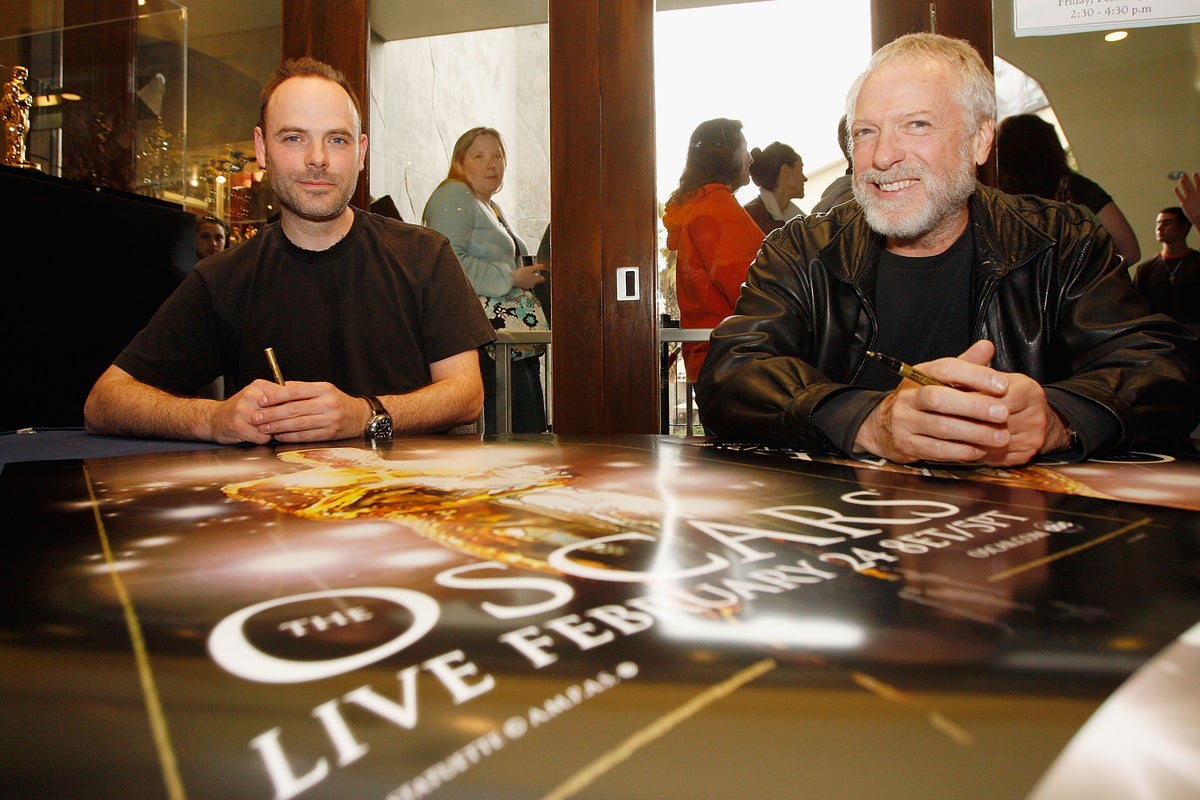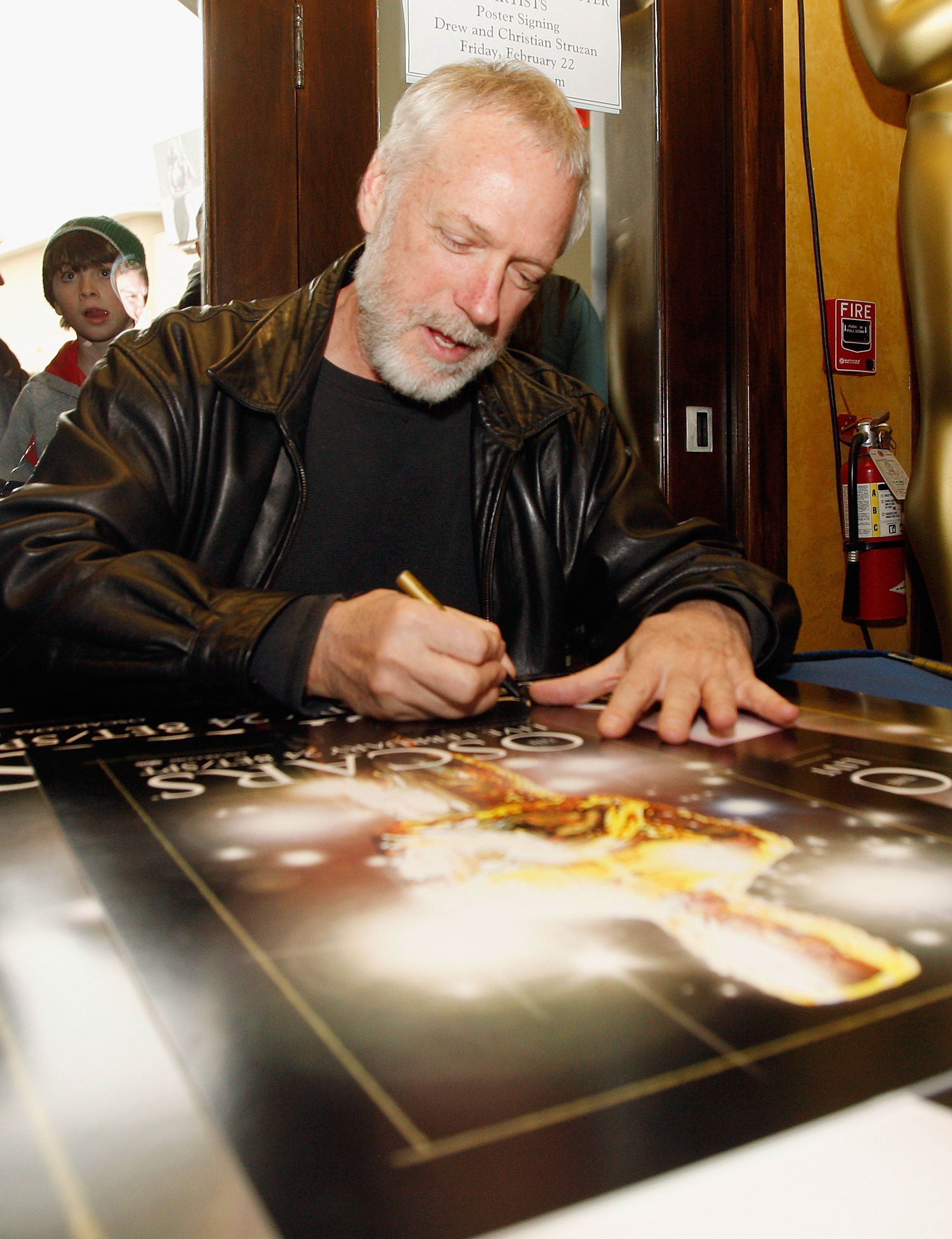
Drew Struzan, the American artist whose hand-painted posters helped define the look of modern blockbuster cinema, has died at the age of 78.
His death was confirmed on his Instagram account on Tuesday, with a post that read: “It is with a heavy heart that I must tell you that Drew Struzan has moved on from this world as of yesterday, October 13th. I feel it is important that you all know how many times he expressed to me the joy he felt knowing how much you appreciated his art.”
Struzan had been diagnosed with Alzheimer’s disease, his wife Dylan Struzan announced on his Facebook in March, writing: “Drew can no longer paint or sign things for you. He is not enjoying a well-deserved retirement but rather fighting for his life.”
Struzan’s work, characterised by highly detailed portraits of actors set against richly coloured cinematic backdrops, became one of the most recognisable visual languages of late 20th-century film marketing.
Over a career that spanned five decades, he painted more than 150 posters, including for Star Wars, Indiana Jones, Back to the Future, ET, Blade Runner, and The Shawshank Redemption.
Born in Oregon City on 18 March 1947, Struzan moved to Pasadena, California as a young man to study at the Art Center College of Design.
He began his professional life as a commercial illustrator, producing album covers for acts including the Beach Boys, the Bee Gees and Earth, Wind & Fire, and his painted sleeve for Alice Cooper’s Welcome to My Nightmare (1975) would later be cited by Rolling Stone among the classic album covers of the modern era.

He has described earning fairly modest fees for album work in the 1970s, telling Decibel he was paid $250 for the week of work on Black Sabbath’s Sabbath Bloody Sabbath. “People get the impression that I get around and I’m part of the scene but the reward was just to have the work,” he told the magazine. “I do get feedback and 40 years later it makes me feel good.”
After joining the design studio Pacific Eye & Ear, Struzan began taking poster commissions in the mid-1970s for lower-budget titles such as Squirm and Empire of the Ants. It was when fellow illustrator Charles White III, who had been hired at 20th Century Fox to design a poster for the 1978 re-release of Star Wars, invited Struzan to paint the human characters that the artist finally had his breakthrough.
Talking about his approach to poster art, Struzan said in a 2021 interview with SlashFilm: “I had to do something different, and I think that the trouble with a lot of early movie posters is that they looked too much like classic illustration, which feels like it's telling the whole story. I didn’t want to do that.
“I felt that art was more than just telling the story. In fact, telling the story in a poster is wrong for a movie. I wasn’t looking to tell a story. I’m looking to give a person a feeling about something they could hope for.”
With the passing of Drew Struzan, the prolific movie poster illustrator leaves behind a legacy of iconic film visuals from Star Wars to Indiana Jones and beyond. https://t.co/NmDw8I2Q2v pic.twitter.com/uazMKtFk6g
— Star Wars (@starwars) October 15, 2025
Struzan largely retired from full-time poster work in 2008 after completing the campaign for Indiana Jones and the Kingdom of the Crystal Skull, but he returned for select projects and limited commissions, like a D23 one-sheet for Star Wars: The Force Awakens (2015), a poster for the documentary Batkid Begins (2015), and collectible prints for projects including The Dark Tower and the How to Train Your Dragon series.
However, Struzan was not immune to the industry changes, and once talked about how the market for hand-painted one-sheets had largely dried up as studios moved toward photographic, digitally manipulated poster art. “Art has always needed patrons to stay alive. You can’t just sit at home and paint; you’ve got to have someone that wants to buy what you do or commissioned you to do something to stay alive,” he told Ain’t It Cool News in 2010.
We got Drew Struzan to paint covers for the Darth Maul series I wrote simply because I suggested we ask him. Career highlight. pic.twitter.com/qVpDtPvUjP
— Ron Marz (@ronmarz) October 14, 2025
Drew Struzan was such an amazingly talented and warm hearted guy. Greg Nicotero told me Drew was selling his originals back in 2011, so I went to Drew’s studio with the intention of buying the Spykids art he made back in 2000. Drew was so generous, he refused to have me pay for… pic.twitter.com/Eelny4Msym
— Robert Rodriguez (@Rodriguez) October 15, 2025
His life and craft were the subject of Erik Sharkey’s 2013 documentary Drew: The Man Behind the Poster, which gathered recollections from collaborators including George Lucas, Steven Spielberg, and Harrison Ford.
Tributes from the film industry and fans began to pour in as soon as news of Struzan’s death broke. Spielberg told Variety: “Drew made event art. His posters made many of our movies into destinations … and the memory of those movies and the age we were when we saw them always comes flashing back just by glancing at his iconic photorealistic imagery. In his own invented style, nobody drew like Drew.”
Guillermo del Toro posted on Bluesky: “The world lost a genial man, a genius communicator and supreme artist. I lost a friend – beloved Drew.”
DC president Jim Lee paid Struzan tribute on Instagram, describing him as a “giant among giants”.
Martin Scorsese ‘not proud of his behaviour’ while making Taxi Driver
Elliot Page says working with Christopher Nolan again post-transition ‘meant so much’
Ben Stiller admits ‘worst decision’ of his life was cutting daughter from movie
Tron: Ares flops at box office with $33.5 million debut against $180 million budget
Nancy Meyers pays emotional tribute to ‘friend of almost 40 years’ Diane Keaton
Diane Keaton death: Woody Allen, Bette Midler and Goldie Hawn pay emotional tribute







